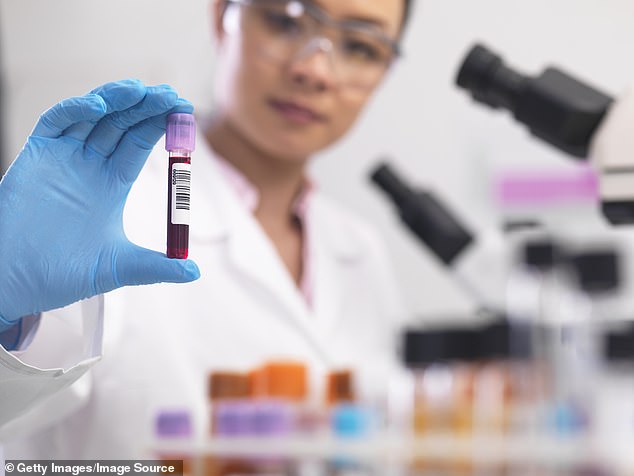“We punch way above our weight,” says Jeremy Sturgess-Smith, co-founder and CFO of Aquis-listed Ananda Developments, whose lead CBD-derived asset, MRX1, shows promise in chronic pain and heart disease.
With a valuation of just under £16m, Ananda has also arguably flown largely under the radar given the state of Phase II readiness of MRX1 and the preclinical data shared with the market last week.
A Nasdaq-listed company with those credentials could expect to have an extra zero at the end of the figure above (at the very least).
But this is the harsh reality of UK life sciences right now: drug development groups like Ananda’s simply don’t receive the recognition or funding of their US counterparts.
Two upcoming Phase II clinical trials, evaluating MRX1 in chemotherapy-induced peripheral neuropathy (CIPN) and endometriosis, have secured £1.55 million in grant funding.
This has led a handful of smaller innovators, including Redx Pharma and C4X Discovery, to leave the public sphere.
That’s not something Ananda is contemplating; in fact, Sturgess-Smith sees the company’s stock market listing as something of a badge of honour.
“In terms of the narrative that UK markets are dead, hopefully we will do something to counter that,” he says.
Digging deeper into the business, Ananda, led by CEO Melissa Sturgess, has been very smart in how it raises non-dilutive funds.
The two upcoming Phase II clinical trials, evaluating MRX1 in chemotherapy-induced peripheral neuropathy (CIPN) and endometriosis, have thus secured £1.55 million in grant funding.
In total, 92 patients will be recruited for the CIPN evaluation to evaluate the potential impact of MRX1 on a common side effect of chemotherapy, causing nerve damage.
Led by Professor Marie Fallon, the double-blind, placebo-controlled study will take place at Edinburgh’s Western General Hospital.
Phase II of the endometriosis trial, led by Dr Lucy Whitaker, Professor of Obstetrics and Gynaecology at the University of Edinburgh, will also begin this year and will aim to recruit 100 patients in hospitals across Scotland.
Together, the two potential indications point to an addressable market of around $2 billion and growing.
Interestingly, this brings Ananda into an area called “chronic pain,” where costs are enormous and where doctors are looking to prescribe treatments that do not contain highly addictive opioids.
In the United States alone, it is estimated that there are 50 million people suffering from chronic pain, while globally the market is expected to be worth $118 billion by 2027.
“(In MRX1) we potentially have a non-opioid drug for chronic pain,” says Sturgess-Smith.
“It is considered quite attractive to the US markets, largely due to the current national opioid crisis, where there is a lot of grant funding available for non-opioid pain relievers, and they are quite open and receptive to international companies and the tests carried out at an international level”.
A third potentially very interesting indication for MRX1 was revealed last week when data from preclinical work pointed to its potential efficacy in cardiac fibrosis and heart failure with preserved ejection fraction (HFpEF). Chairman Charles Morgan described the initial readout as “profound.”
Cardiac fibrosis, which involves thickening and stiffening of heart tissue, can severely affect heart function.
HFpEF manifests as symptoms of heart failure despite normal pumping capacity and is becoming more common with an aging population and increasing health problems.
Research conducted by Dr Nadine Godsman and Dr Sarah Walsh at Robert Gordon University (RGU), under the direction of Professor Cherry Wainwright, a member of Ananda’s scientific advisory board, showed promising results.
The results indicated that MRX1 had significant cardioprotective effects.
The heart and lung weights of treated mice returned to near-normal levels. In addition, MRX1 significantly reduced levels of brain natriuretic peptide (BNP), a marker of cardiac stress, suggesting a statistically significant reduction in cardiac dysfunction.
Sturgess-Smith contextualized the findings: ‘In addition to Epidiolex (GW Pharma’s treatment for severe epilepsy), this is one of the first proper data showing that the CBD molecule and, in particular, Ananda’s patent-pending formulation , MRX1, has a genuine medical impact in a condition where there is a high unmet need,’ he explained.
“We therefore believe that (the data) opens an interesting avenue for another clinical trial for Ananda’s growing portfolio and to explore what is really a novel condition for MRX1.”
Sturgess-Smith noted that it was too early to determine how a third clinical study would be funded or the level of interest in this potential third indication for MRX1.
Given the lack of alternative treatments and the high mortality rate associated with HFpEF, there is expected to be significant interest.
Looking ahead, Sturgess-Smith said, “In terms of HFpEF, following the announcement of these data, we will sit down with the research team at Robert Gordon University and consider what the recommended next steps are: a second, larger study in mice or, our preference, to begin putting together a human study.”
For all the breaking news on small cap companies, visit www.inversoresproactivos.com.
Some links in this article may be affiliate links. If you click on them we may earn a small commission. This helps us fund This Is Money and keep it free to use. We do not write articles to promote products. We do not allow any commercial relationships to affect our editorial independence.

